

Kimber Kable Carbon 8 Interconnects, Carbon 18 XL Speaker Cables, Ascent Power Cables, And Select Copper USB Cable
Mega-transparent, plus satisfying every other trait one would expect.
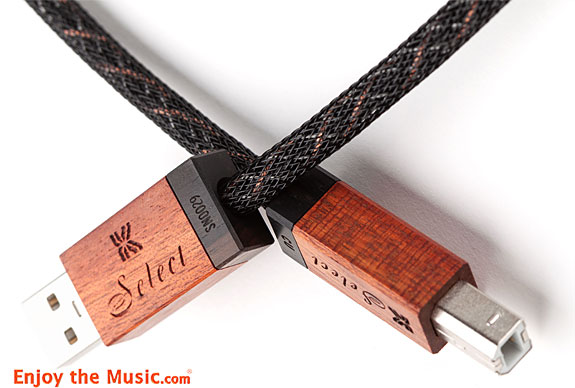
I‘ve often said that the best way to test audio cable is to rewire one’s entire system with that brand or model. This way one will be able to hear the difference in sound quality with any influence from other types of cable, and truly hear its affects. Kimber Kable (not a typo, Kimber likes to replace the “C” in cable with a “K”) is one of the only brands of cable that I have found where I could replace once interconnect in my system, and hear a very distinct improvement of the sound of my system due to this one cable change. One might think I discovered this recently, with my system loaded with pricey review gear, but this was not the case. This happened during the 1990s when I had just started reviewing high-end audio equipment. My system at the time was decent, but nothing like it is today.
The Kimber Kable I acquired was their PBJ interconnect, for which I paid somewhere between $50 and $100. I inserted the cable between my conrad-johnson PV9 preamplifier and Parasound HCA-2200 II power amp. To my pleasant surprise, the sound of my system opened up, and I thought I heard a much more transparent sound from the entire set-up. Shortly after I tried this test with other brands of affordable cable, and to my chagrin the difference in sound was only very slight. My audiophile friend and I joked that we could hear a much more profound improvement in the system’s sound quality from this other cable we were testing if we looked at the cable while the music was playing. Ha ha!
Kable
The company Kimber Kable was born in the 1970s when owner Ray Kimber worked for a sound and lighting company in Los Angeles. To make a long story shorter, he worked in nightclubs installing and maintain their sound and lighting equipment. It was then that through trial and error he discovered that braiding the audio cable greatly reduced the noise that the club’s lighting generated. Not only was there a decrease in the amount of noise, but the sound quality of the audio system improved using this braided cable. And thus, Kimber Kable was born.
Soon after, Ray Kimber demonstrated to dealers the benefits of using his cables by replacing the speaker cables of a system with his speaker cables, proving that with his speaker cable there was a significant improvement in sound quality. Over the years, Kimber would improve the performance of his cables by testing and ultimately using different types of metals, manufacturing methods, insulation, and other types of modifications to his original design, and other types cables.
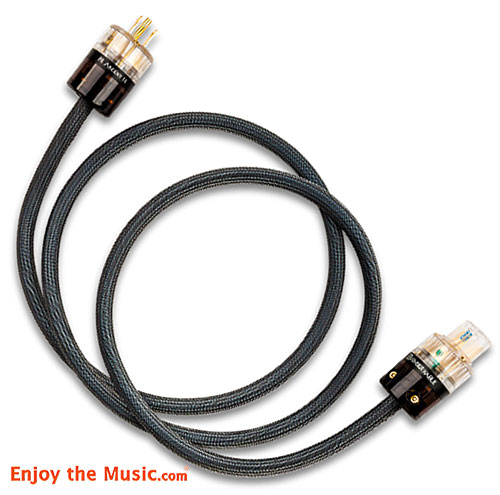
Best
Which brings us to today’s versions of Kimber Kable that I am reviewing here. I was sent for review some of their best examples of Kimber’s current offerings, including their Carbon line of interconnects, their best Ascent power cables, and by my request, their Select Copper USB cable. I was sent enough cables to re-wire my entire main system. In this system during the review period it consisted of a digital front end of a computer-based music server, with its USB output connected to an ESS DA2 digital-to-analog converter. I used a run of Kimber’s copper Select KS2400 USB cable for this link. Kimber says that this cable delivers “awesome improvements” over mass-market USB cables. They say that the cable will lower the noise floor, and increase dynamics.
Also connected to the EMM Labs converter was the digital coax output of an OPPO UDP-203 Blu-Ray/universal disc player, there I used a one-meter run of Kimber D-60 digital cable terminated with RCAs on both ends. This cable uses what Kimber calls a “hyper pure” silver conductor in an “air-articulated fluorocarbon dielectric with twin helically wound shields” to protect it from RF interference along with some proprietary cable layers and technology. They make this cable with optional BNC and RCA type connectors, along with composite, component, and RGB+HV formats.
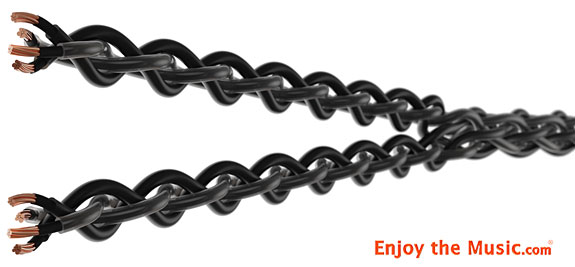
I also used a Kimber Carbon 8 interconnect to connect the OPPO’s analog outputs to the EMM Labs converter to a Nagra Classic Preamp linestage. The Carbon 8 interconnect, of course, uses Kimber’s braided conductors. But the use of carbon in their top of the line cables, Kimber says, is “electrostaticly dissipative”, and reduces mechanically induced electrical noise and improves the “uniformity of the voltage gradient within the insulating dielectric”. The outside of the cable is also impregnated with carbon, which is said to reduce charge accumulation, and the use of this cable will result in a sound that is “neither excessively bright nor overly dark”.
The analog front end of my reference system includes a Basis Audio Debut V turntable with a Tri-Planar tonearm. Currently the phono cartridge mounted on its ‘arm is a TopwingSuzaku Red Sparrow. The tonearm has an integral cable, so there’s no need for a phono interconnect. The phono preamplifier is an Allnic K-7000v, which is on loan (review forthcoming), which replaced my reference phono preamplifier, a Pass Laboratories XP-17, about halfway through this review. Regardless of which phono preamplifier I was using, its balanced outputs were connected to a Nagra linestage using a Kimber Carbon 8 interconnect with XLR termination, but I also tested Kimber’s Carbon 8 terminated with RCAs.
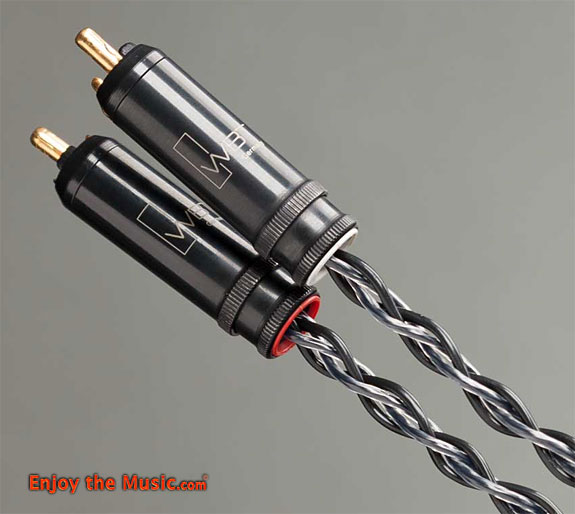
The power amplifier at the time of the review period was my reference Pass Labs X250.8, Connected to its speaker posts (they only accept cables terminated with spades) were 12 feet of Kimber’s Carbon 18 XL speaker cables running to the speaker posts of a pair of Sound Lab Majestic 454 electrostatic speakers. In the system I also use a pair of SVSound SB16-Ultra subwoofers, but I did not request from Kimber the very long cables that would have been needed to test them.
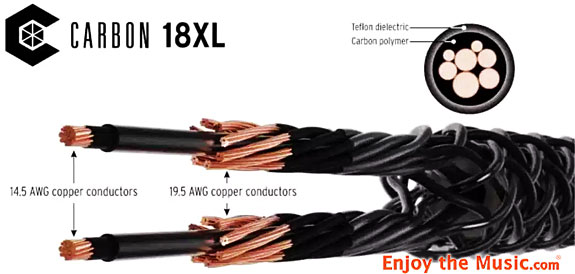
Kimber considers their Carbon 18 XL speaker cables a “thoughtful” combination of a braided geometry to optimize the reactance profile and a non-twisted parallel straight run that should aid in minimizing DC resistance for a wider bandwidth and optimal amplifier damping. They claim the in one’s system will result in “lightning fast transients” and unrestricted upper ranges. They also claim it is perfect for high current wide bandwidth applications, which exactly how it was used in my system.
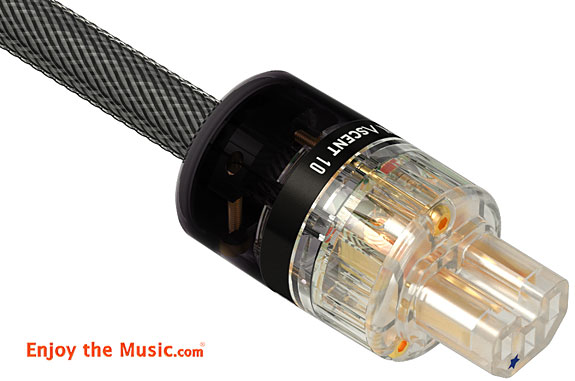
I used both Kimber’s PK 10 and PK 14 Ascent power cables throughout my system. These cables have gold Wattgate connectors, pure copper connectors They also use what Kimber calls “neutral colored, virgin dielectric materials” which they say “ensures and maintains conductor purity”. Any audiophile with a decent system that has experienced what a good power cable can do to up the performance of just about any component in their system should be able to imagine what would happen if they replaced all the power cords in the system, all at once. That’s exactly what I did during the review period of the Kimber Kables. But what I also did was remove some of these new power cables and replace them with generic power cables, one component at a time during lengthy listening sessions, just to hear what happened. Spoiler alert: the decrease in sound quality was instantly noticeable.
Replace
As one could probably guess, when I replaced all the power cables in my system with Kimber Ascent power cables there was an improvement in sound in all areas. It is important to note that I wasn’t using generic power cables before the Kimber power cords were installed in my system. I’ve been trying out quite a few brands of cable lately. And so, it was an excellent lesson in hearing what the character of the Kimber Kable power cords were like by removing them one cable at a time, and replacing them with another cable, sometimes even replacing it with a generic cable. Often the difference in sound quality was noticeably small, but these sonic changes were almost always significant. This exercise was a pain in the neck, but it was very instructive.
I didn’t have the time to perform this test with Kimber’s interconnects, although there was definitely a change in the sound when replacing a single interconnect. The greatest difference I heard was when installing and then removing the balanced Carbon 8 interconnect between the Nagra linestage and the Pass Labs power amplifier.
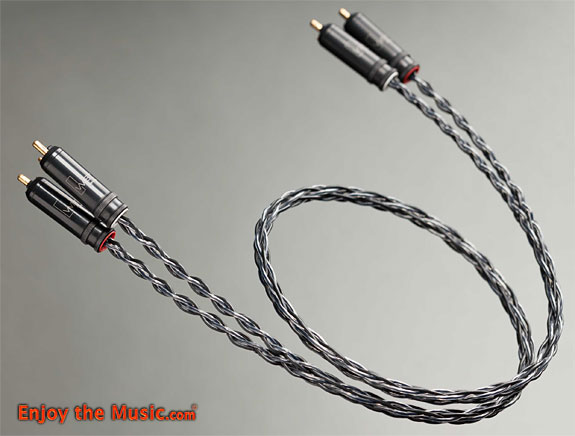
Sound
After living with the Kimber Kables in my system for a while, and then removing and re-installing some of them, I got a greater sense of the audible contributions these cables made to my system. Firstly, it did not matter much what type of cable I tested; interconnect or power, the greatest contribution the Kimber Kables made to the sound of my system was that the noise floor was lowered. There were other positive changes, such as the power cables subjectively increasing a sense of muscularity to the power amplifier. The thing is, though, my reference system had a very low noise floor to begin with. Lately my system has been host to some very nice brands of cables, some that I’ve been auditioning, some on loan, and some are permanent residents.
The background noise of my system was so low before installing the Kimber in my system, often I would often wonder if the mute control on the linestage was activated or not, having to press my ear against the grille of a speaker to check. Despite this, I had not only a sense that the noise floor was lower by not only being able to hear a difference between the mute on or off, but by the other characteristics of the system being elevated because of this lowered noise. This was especially true of the microdynamics of the system, and being able to hear “into” a recording more than before the Kimber was installed.
This lack of background noise also subjectively increased the extension of the frequencies, both the lows and highs. It would be interesting if someone from the audio measurements sect was somehow able to bench tested a component in my system while it was operating with and without using Kimber. Would its measured frequency response performance be improved? I doubt it. But this hardly matters, since if I can hear it, then it exists! If I put on a record and feel as if I can hear tighter deeper bass, and crisper, more extended treble, is someone going to come along and tell me “no, you don’t hear that”? I’m sure they’ll be some audiophile that would love to explain to me, “No, what you’re really hearing is…”. I’d rather they would instead sit down and listen to some music with me.

Benefit
I realize that this is a subjective impression of the benefit of using good audio cables –that I usually can feel that I have a more direct connection to the music. When playing music on my system I feel that there is a more direct, uncolored connection to the component the is higher in the audio chain. When this happens, it makes sense to recommend to others to use the best cable one can afford. Of course, it is also good to use cables that make as secure a connection as possible, are easy to handle, and perhaps even look good.
But why do I hear more of what I describe as a direct, uncolored connection to the component that is higher in the audio chain? The adage of a cable sounding as if there is no cable at all between two components is, as far as I’m concerned, the raison d’ê·tre of high-end audio cables. With this sonic Holy Grail as the objective, the search for a cable that can come as close to this as possible, within our budget should be our goal when it comes to cabling our systems.
How close does Kimber Kable come to this ideal cable I described? I finally tracked down a vinyl copy of Kraftwerk’s live album from their 2004 tour, Minimum Maximum, which is packaged as a four LP boxed set. It took me a while to find an affordable copy, only because since I didn’t order one when it was released, and then bided my time until I could find one at list price. The album had already been released for a while before I finally snagged a copy, and I was worth it, even though its list price wasn’t too “affordable”. But I digress. The CD release of this title sounds fine, but much better on vinyl for a host of reasons.
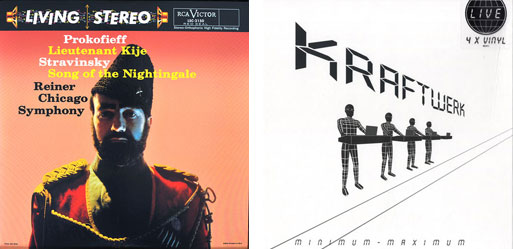
With the Kimber Kables in my system it was immediately apparent that these cables were something quite special. This this was not because they injected their own “great” sound into my system, but because even though the difference was, as I used this expression at least once before, very slight but significant, I felt as if this was the first time I ever “really” heard this album. How do I know what this album should sound like? This is where you’ll have to trust me, dear reader. I’ve had this album for years. I’ve gone through quite a few system changes during these years. I’ve heard this album with quite a few different highly regarded audio cables in my system. And I’ve heard this band live about six times, starting in 1981. I know what Kraftwerk sounds like. And I know what this album sounds like.
On the track “The Robots”, which is on the side 1 of the fourth record of this 4-record set, there is a bass synth line that starts the song, which not only a great test from a systems low end, but the rest of the frequency response, since there are quite a few other resonant sounds mixed in with this bass synth tone. About two minutes into the track there is a second bass synth, even lower that the first, that joins in. With the Kimber in the system it allows these bass tones to remain not only separate, but the layering of tones within the bass synth sounds that they have electronically sculpted, makes it so these bass tones remain within their space of the huge soundstage that is occupying the front half of my listening room. Without sounding forward, the remaining synthesizer tones, including some pounding percussion, enveloped me and my listening position, reminding me of the time I saw them play this track in the acoustically excellent 9;30 Club in Washington DC in 2004. I was literally a blast playing this track at a healthy volume.

Favorite
When I landed back on Earth, for kicks I played an old favorite, Prokofiev’s Lieutenant Kije, on a Classic Records reissue of the RCA “Living Stereo” LP, as played by the Chicago Symphony, conducted by Fritz Reiner. It is paired with Stravinsky’s Song of The Nightingale, which for some reason doesn’t have the same first-rate sound quality. But listening the Prokofiev piece never gets old. And it also happens to be a great demo record from one’s Hi-Fi, too, because even with its patina of tape hiss, it is one of the best recordings in my collection.
The Prokofiev piece on this album is a great way to demonstrate a system, let alone to hear a difference that a change of component or cabling has made. This five-movement suite was whittled down from the score of the film Lieutenant Kije that was commissioned by a film studio in Leningrad. He wrote this piece after living in Paris for about a decade, where he obtained a reputation for writing music that was more “modern” than what the Soviet officials would have approved of. This piece seems to have found a happy medium between the two OPPOsing camps, and perhaps that is one of the reasons it became so popular. Even though he purposely “simplified” some of the orchestration, it is still very engaging.
And this LP has become very popular with audiophiles, since it is so well recorded, and has music on it that can test just about any aspect of one’s system. First of all, there’s lots of percussion, the score calls for an orchestra with s bass drum, snare drum, triangle, cymbals, tambourine and sleigh bells, and of course, this is in addition to a large, full orchestra. The Kimber cable made it so my system could sort of all of this, display every sound, and in a very lifelike fashion, to the point where I’d catch myself turning my head quickly to the side when surprised by a sound as if it was entering the room.
Everything on this record gave me not only plenty to listen to in the form of real instruments playing in a real space, but when compensating for the impossible task of reproducing a full orchestra in the confined space of my listening room, my system somehow did this by acting as an attenuator more than anything else, as I would dread having to sit next to a ffff concert bass drum being played in my listening room. More than anything, the Kimber cables allowed me to at least imagine I was coming as close to hearing the source using the most transparent, non-additive or subtractive sounding cables that I’ve ever heard in my system.
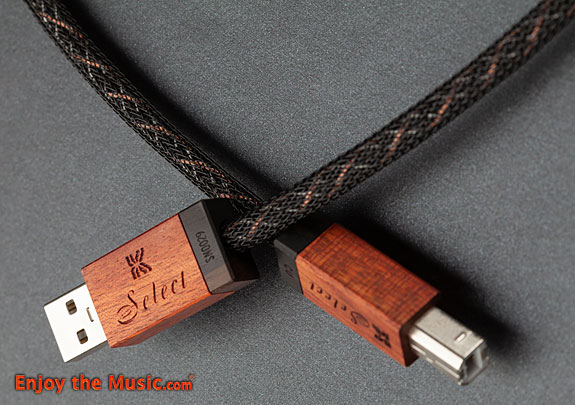
Review
The Kimber Kables that I review here, their Carbon 8 interconnects, Carbon 18 XL loudspeaker cables, Ascent Power cables, and Select Copper USB cable, are not inexpensive. But neither are they the most expensive cables on the market. That last part isn’t going to be much comfort to many when they finally discover how much each of these cables cost. But there are actually some things that you get what you pay for. Even if these cables didn’t sound as mega-transparent as they do (but they do), they satisfy every other trait where one would expect a well-made cable in the area of looks, flexibility and attaining a secure connection. Recommended? You bet!
| Tonality | |
| Sub–bass (10Hz – 60Hz) | |
| Mid–bass (80Hz – 200Hz) | |
| Midrange (200Hz – 3,000Hz) | |
| High Frequencies (3,000Hz On Up) | |
| Attack | |
| Decay | |
| Inner Resolution | |
| Soundscape Width Front | |
| Soundscape Width Rear | |
| Soundscape Depth Behind Speakers | |
| Soundscape Extension Into Room | |
| Imaging | |
| Fit And Finish | |
| Self Noise | |
| Value For The Money |
Specifications
Type: Precision high-end audio cables” (WxDxH)
See Kimber Kable’s website for details on each cable and available options
Price: Carbon 8 interconnect 1m pair terminated with WBT-0114 CU is $576
Carbon 18 XL Speaker Cables 2m pair $3600
PK10 Ascent power cable, 1.5m single is $377
KSUSB-CU, 1m single is $675
Company Information
Kimber Kable
2752 S.1900 West
Ogden, UT 84401
Voice: (801) 621-5530
Email: info@kimber.com
Website: www.Kimber.com















Want to join discussion?
Feel free to contribute!